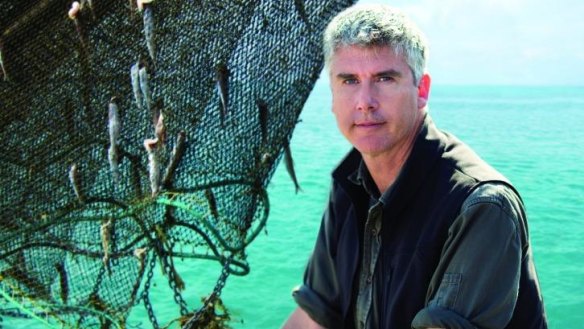Do you know where your seafood comes from?

Does our addiction to seafood risk loving parts of the ocean to death?
That's the question I wanted to answer when I started looking at Australia's seafood. When you gaze out at the ocean, it looks just the same as it did when I was a lad but I kept hearing horror stories from overseas. The collapse of the cod fishery in Newfoundland. The near closure of wild salmon fishing in Ireland. Stories of fish pirates, pillaging far-off oceans. And I wondered if I could make better choices about seafood; decisions that would cause the ocean less harm.
Australia is a net importer of seafood. We tend to export the upper end of what we produce – things such as prawns, lobster and abalone, and import cheaper things. Some premium seafood is imported too. It has to be, with about 70 per cent of the seafood we consume in Australia coming from overseas. Despite having the third largest fishery in the world, we simply don't have an oversupply of fish, thanks to simple geography. And despite Australia being managed in a relatively sustainable way, unless we start farming a heap more fish, and change the kind of fish we eat, we simply must rely on imports. But if what happens under the ocean is hidden from view in our waters, it's totally invisible overseas.
Roughly 70 per cent of prawns sold in Australia are imported. Most are farmed and many of them come from South East Asia. So I went to Thailand to see how some of them are produced.
Before I went, however, I was told that every box of prawns from Thailand can be traced back to its farm. Traceability is a wonderful thing. So my team did some spy work, got a photo of the factory code from the side of a box at a takeaway joint and contacted wholesalers and importers. And the takeaway chain's head office. And they were vague, didn't get back to us or said it'd be near impossible to trace.
Seriously, could one of our larger buyers be using prawns that they don't know the actual origins of? Remember the European horsemeat scandal? How big companies have the buying power, and the moral imperative, to actually know and care how their ingredients are produced? It seemed farfetched that Australia's largest buyers would source food from a system that may lack accountability.
In Thailand, I cried when I saw the sea being dredged for seemingly every bit of sea life, much of it used to make fishmeal to feed prawns. I tried to convince a fishmeal factory owner that she could be the honourable buyer; that her fishmeal could come from sustainable fishing, and failed. I went to a prawn farm and met the processors, who said there was no way these prawns would be distinguished from those of other farms. Prawns destined, at least in part, for Australia.
Labelling may help you decide if the seafood you eat comes from that system or not. But voluntary labelling of seafood has failed the consumer. Prawns on your menu could be grown using some of the feed I watched being torn from the ocean, or from a prawn farm that uses sustainable feed. It's like putting cage eggs in the same box as free-range.
You don't go out and eat a bird pie or a mammal sausage. Why then just ``fish"? Good takeaways and restaurants, ones proud of their seafood, should tell you where it was from and how it was caught or if it is farmed. The others, the ones that want to obscure the origins of their seafood, can hide behind inadequate labelling laws.
And I, for one, want that to change.
What's the Catch? with Matthew Evans is on November 6 and 13 on SBS at 8.30pm.
Restaurant reviews, news and the hottest openings served to your inbox.
Sign up